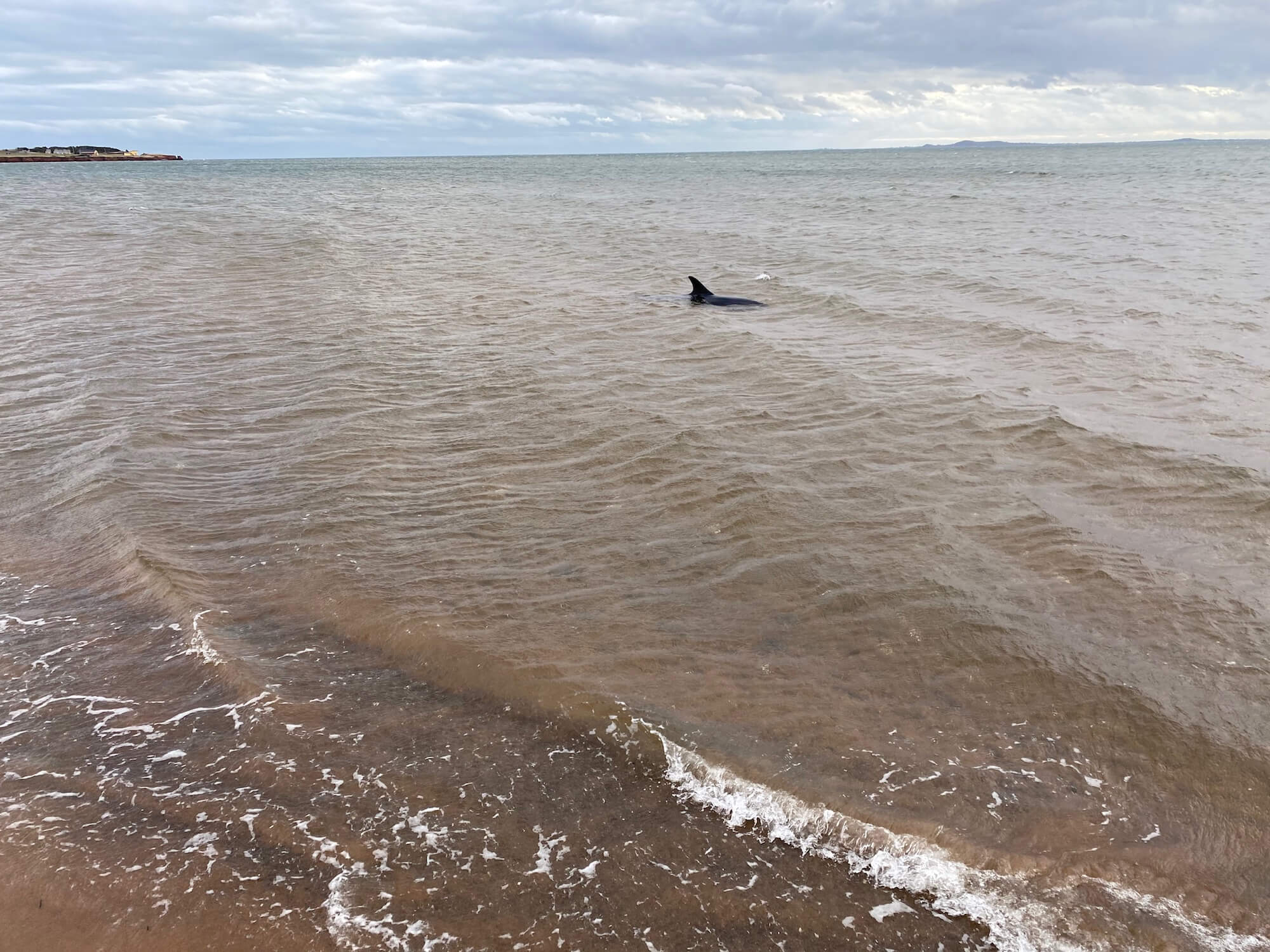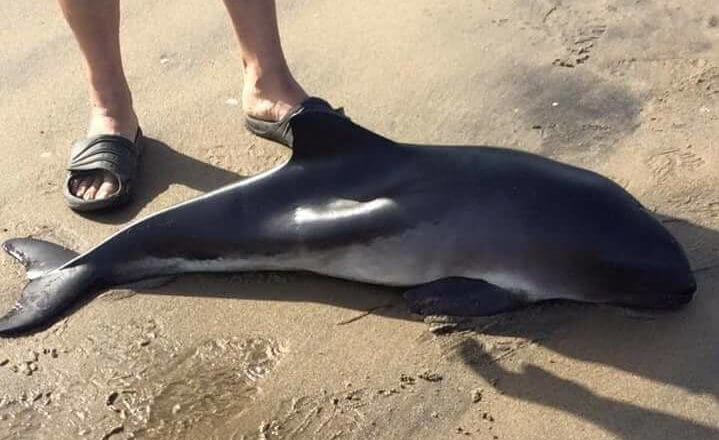A dolphin found itself in an awkward position on November 21 near Gros-Cap, in the Magdalen Islands. Out for a stroll, a man and his children discover a cetacean floundering in shallow water about 5 metres from the beach. He contacts and later sends photos and videos to the Quebec Marine Mammal Emergency Response Network. Thanks to these images, the specialist at the call centre is able to confirm that the animal is a dolphin, though the exact species cannot be determined. The dolphin manages to move a little, but occasionally tips onto its side, confirming it is in very shallow water.
Quickly, wildlife veterinarian Stéphane Lair is consulted. The animal does not appear to be in too bad of shape. However, he recommends preparing equipment for a potential release in the event it becomes completely stranded. Since dolphins are sensitive to stress, he rules out any operation in which the animal would be removed from the water and trucked to a different location. Fishery officers trained for releases are notified so that they are ready to mobilize if necessary.
The witnesses, who have been asked to leave the area, call the Network back to report that the dolphin has headed out to sea and that it is now about 30 metres from the beach. A volunteer is sent out to the site to continue monitoring the animal. However, upon her arrival, the volunteer is unable to locate the dolphin. The following day, other volunteers patrol the coast, but do not see the animal. On Monday, fishery officers return to the area and do not spot the dolphin either.
What happened? What brought the animal so close to shore and what drove it away? The dolphin may have been trying to flee from a threat such as a predator. It is also possible that the animal was ill or disoriented. Did it regain its strength and set off on its own? Was it captured by a predator? Did it die? As is often the case, the Quebec Marine Mammal Emergency Response Network team does not know exactly how this story ends. However, documentation of this incident adds to our knowledge of strandings, which remain a rare phenomenon in Quebec.
Rare stranding
Over the past five years, around ten or so live cetacean strandings (two to six per year) have occurred on the shores of the St. Lawrence. These events mainly involve small toothed cetaceans such as porpoises or dolphins. In five years, the only baleen whale found stranded alive was a humpback. It ran ashore in March 2018 in the Magdalen Islands. In some cases, the animal was able to work its way back to the open sea – though it is unknown whether or not it survived – but the majority of cetaceans that run aground die quickly.
What should you do if you find a live stranded whale?
By definition, a cetacean is considered “stranded alive” if it is touching the ground, has stopped floating and can no longer move about freely. Since whales are mammals, they can survive for extended periods out of water under certain conditions, unlike fish.
- Your first instinct should be to dial 1-877-722-5346, the emergency line of the Quebec Marine Mammal Emergency Response Network.
- Call the Network. The person at the call centre can assess the situation with you and quickly get in touch with animal health experts and responders who are trained to intervene in these types of tricky situations.
- Do not approach the whale: it can be unpredictable and injure you or transmit disease. Additionally, by keeping your distance, you avoid increasing its stress levels, which are probably already very high.
- Do not attempt to touch it or handle it: improper handling can be fatal.
For each new case, the different options are analyzed by a team of veterinarians and marine mammal experts, who act in accordance with the ethical framework developed by the Network. For example, if the animal is able to leave on its own, it will be observed. If the animal is too weak or injured or if a return to water poses a risk of spreading disease, responders might consider euthanasia.
If an incident arises that is directly attributable to a human cause, efforts will be made to help any animal in trouble. Likewise, if the incident involves an individual belonging to a threatened or endangered species, the experts will assess whether rescuing the animal could contribute to the recovery of the population. Other specific contexts may also justify an intervention. In the case of pilot whales, for instance, a gregarious and sociable species, putting a stranded individual back into the water can prevent other group members from also beaching themselves.
When the decision is made to intervene, if the animal appears strong and if trained teams with a permit from Fisheries and Oceans Canada are available, an attempt will be made to find a release site that is safe both for the animal and the responders. Ideally, animals should have free access to the sea without having to perform complex navigation manoeuvres.







